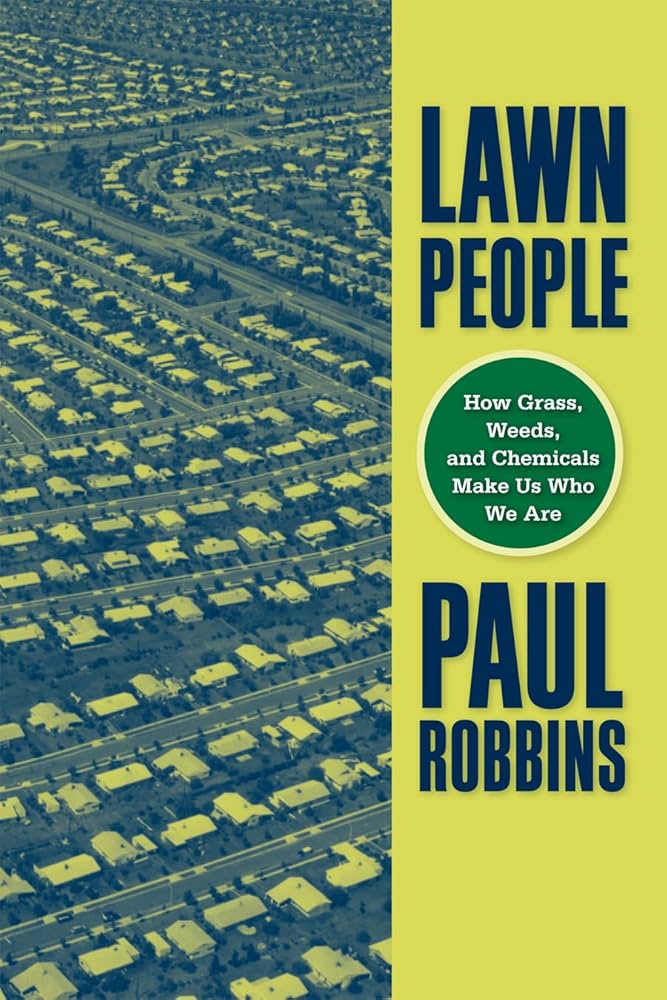Kendrick Lamar’s Discography
By: Padraig Smith
PreRamble:
Hi, I’m Padraig Smith and I’m the author of this review. I am a huge fan of all types of music and love listening to albums straight through. So, naturally, I wanted to share my opinions on different albums that I think deserve recognition for either being outrageously good or outrageously terrible. Music has played a large role in my life and is also just useful to have playing while I’m doing other things. I’ve listened to hundreds of different artists all from different genres and can easily say that there’s no bad genre of music, but there are sadly bad artists. I hope you like my review and over time maybe find some new music you might like. If you want, you can email me any albums you want to see me review at Smith.P357@student.cbsd.org (or just use my name on Outlook).
This review is structured with 9 albums in a complete review of the artist Kendrick Lamar’s entire discography. The overall rating of each album is accompanying the title right underneath it. This review is separated into two segments with one half being Kendricks main Studio Albums and the second half is Kendrick’s early works and special projects. Enjoy!
Introduction
Kendrick Lamar is beyond that of a rapper. He is a movement, the poet of the times taking his life to be the mirror that we might examine the deepest scars of America. Born and raised in Compton, from the start, Kendrick came out with bars and a whole purpose. Each album he releases is a new conversation in an interminable series on race and identity, trauma, and redemption. His music does not just reflect his environment; it stands up against it, interrogates it, and seeks to change it. To track Kendrick’s discography is to track the odyssey of one caught between survival and salvation, the spotlight and the dark underbelly of the street, and the prophet and the human being.
Studio Albums
Section.80 (2011)
Rating: 4/5 ⭐⭐⭐⭐☆
Section.80- Kendrick Lamar’s first studio album- was the bedrock for one of the most talked-about stories in hip-hop. That bedrock was laid alone through Top Dawg Entertainment. You could hear the raw talent, storytelling, social commentary, and conceptualism that would become the hallmarks of Kendrick’s work on the album, which was somewhat less polished than his future classics.
Section.80 stands ambitious in its themes of generational trauma and systemic oppression met with people born in the 80s- the “crack era” or “Reagan Era.” Songs like “Ronald Reagan Era” and “Keisha’s Song (Her Pain)” paint a picture of life in the inner city in America back then with- drug epidemics, violence, and lost innocence. Here, Kendrick is amazing. Even as a young teenager, he can make thick societal commentary feel personal and relatable. The storyline revolves around Tammy and Keisha, two ladies who have been misused and exploited. These two ladies embody the uphill battles of many in the community in which Kendrick finds himself immersed. That layered storytelling is intense on “HiiiPoWeR,” the anthem of the album, a political statement and highly philosophical manifesto. J. Cole produced that track, a nicely representative sample of the album’s intense energy: raw, passionate, and contemplative.
Section.80 has its flaws. The production’s just pretty good-it’s neither cinematic like Good Kid, M.A.A.D City nor near the jazz funk of To Pimp a Butterfly. Some of the beats are raw, and the project sometimes even lacks the interconnectedness that is a hallmark of Kendrick’s later work. But what really adds to the appeal is Kendrick’s hunger and authenticity. That is what Section.80 makes such a monumental debut: not just as an introduction to Kendrick Lamar but as a standalone statement on the struggle of a generation. Conscious and emotional, this was the beginning of a road that would open gold for Kendrick on his way as a voice for this era. Section.80 is absolutely essential for understanding Kendrick’s artistic roots and the point of departure for his lyricism.
Good Kid, M.A.A.D City (2012)
Rating: 5/5 ⭐⭐⭐⭐⭐
Good Kid, M.A.A.D City is an album that deserves to be considered a film-camera in hand, a complete coming-of-age story & one of the finest hip-hop records that one can lay their ears on. It’s often commonly referred to as a “short film” under Kendrick Lamar, and that is mainly because it dives into such personalized depth.
You get the closest possible view of Kendrick’s life growing up in Compton; there are accounts of him dealing with peer pressure, gang violence, and searching for his true identity. It’s that perfect blend of vivid storytelling, layered production, and depth that puts GKMC in one of the highest brackets of hip-hop albums. You see the aspect of it, too, in Kendrick’s narration as he runs the streets of Compton while pointing out both the glitz and glamour and disillusioning sets. The song “The Art of Peer Pressure” and “m.A.A.d city” stand at the intersection of youthfulness and gang culture, “Sing About Me, I’m Dying of Thirst” is an emotional roller coaster trip that delves into some of the struggles facing those around him-and Kendrick’s lyrics shine particularly brightly here; he can draw from various perspectives and cut with candid, confessional narratives so that the feeling is almost like a novel.
The production? A class on its own. Dr. Dre, the executive producer, somehow combined the West Coast feel with progressive sound design. The eerily aggressive “Backseat Freestyle” stutters into your mind, followed by smooth, drawn-out melancholy in “B****, Don’t Kill My Vibe.” “Money Trees” and “Poetic Justice” share lush instrumentals with Kendrick’s message. It’s very dynamic—radio singles and deep cuts. “Swimming Pools (Drank)” was a party anthem, and it was also kind of about self-destruction. It’s almost a flaw that GKMC set such a high bar for conceptual storytelling that some of Kendrick’s later mainstream projects became overshadowed by it.
Projects that I think are more commercially viable are often far less conceptually ambitious, like DAMN. But GKMC is Kendrick’s most coherent project. Good Kid, M.A.A.D City is what encapsulates Kendrick’s artistry: great narrative, layered social commentary, and great production. Listen to this album if you want to hear modern-day hip-hop storytelling and make sure it is on your playlist.
To Pimp a Butterfly (2015)
Rating: 5/5 ⭐⭐⭐⭐⭐
Some may argue that To Pimp a Butterfly is a more difficult album to dive into than Good Kid, M.A.A.D City or DAMN., but its ambitions and artistic integrity secure its title as one of the all-time greatest hip-hop albums. It does not rely on radio hits but forcefully asks you to grapple with its complex themes and layered soundscapes. Just as the album contains sprawling instrumentation and unconventional song structures, it also rewards multiple listens with new details and meanings each time.
At the end of the day, TPAB is not simply an album; it is a cultural artifact, a master class of musical and lyrical depth still resonant nearly a decade later. It stands as testimony to the brilliance of Kendrick Lamar in the second decade of the 21st century and exploring a single subject — race, identity, and the psychological trauma of fame — with a political bent as well as personal stories. With chilling realism, the bluntly disillusioned story, such as the songs The Blacker the Berry and Alright, ” allowed these songs to art-vert hard-hitting realities of systemic racism, black empowerment, and social struggles. “Alright” earned a later-accoladed hall in the long history of anthems that still serve the Black Lives Matter movement, showing how Kendrick’s music is a powerful unit of social change rather than simply an entertainer. The psychologically intensive vulnerability shown by Kendrick is further escalated by songs like “u” on mental health and self-doubt.
This album is different from the music of the trendy rap scene. It comprises colors of jazz and funk with esthetically esoteric-hypnotic hip-hop from artists such as George Clinton and Thundercat. While “King Kunta” and “These Walls” have a certain funkiness to them, “Institutionalized” and “How Much a Dollar Cost” are more concerned lyrically and philosophically with poetry that resonates at both the local and global levels. The sonic choices made here break traditional conventions of hip hop, which adds to its experimental jazz attributes.
Narrative depth is one of the first striking features that TPAB sets out to raze. The album traces Kendrick’s journey towards self-discovery, a path bedeviled by darkness and illumination. This was symbolized by the spoken word pieces that recur in the album and form a thread that gathers them all in a conversation that occurs posthumously with Tupac in the last track, “Mortal Man”. Personal troubles (survivor’s guilt, depression, the pressure of fame) weave their way into societal ills in very profound ways within the whole album, making it a refuge and an almost cinematic experience. A central theme in TPAB is the metaphor of the caterpillar and the butterfly, oppression and transformation. Kendrick sees himself as a product of his environment, struggling to break free from societal limitations and personal demons. The poem that develops throughout the album becomes an affirmation as he grows and ultimately realizes his role in uplifting his community.
Of course, it is an album, but TPAB belongs to another conceptual plane altogether, an artifact of culture, and above all else, a masterclass in musical and lyrical depth tromped into everlasting resonance some eight years after its release.
DAMN. (2017)
Rating: 5/5 ⭐⭐⭐⭐⭐
After the jazz-infused complexity of To Pimp a Butterfly, Kendrick Lamar returns with DAMN., an album that strips away the ornateness and conceptual grandeur and gets straight to the point. This one balances lyrical depth with mainstream appeal and gives us some of Kendrick’s most aggressive and commercial tracks while still keeping the introspective themes intact. It’s less political and musically experimental than TPAB, but it explores fate, morality, religion, and self-worth with razor-sharp lyrics and a structure that rewards multiple listens.
The album is built around contrasts—love vs hate, pride vs humility, fear vs confidence—and highlights Kendrick’s inner battles as he reflects on his rise to fame and the weight that comes with it. The opening track “BLOOD.” introduces the album’s existential weight with a cryptic parable that suggests Kendrick’s life (and by extension all life) may be dictated by forces beyond his control. This idea of destiny and consequence runs throughout the album and culminates in the stunning closer “DUCKWORTH.” where Kendrick reveals a chilling twist of fate: his father’s life was once in the hands of Anthony “Top Dawg” Tiffith, the man who would later sign him to Top Dawg Entertainment. If things had gone differently, Kendrick may not have existed as we know him today. It’s a powerful statement about luck, survival, and the fragility of human life.
Musically DAMN. marks a shift from the live-instrument-heavy sound of TPAB to a harder, more minimalist approach that blends trap, West Coast hip hop, and even rock influences. Tracks like “DNA.” and “HUMBLE.” really highlight Kendrick’s commercial appeal- they’re basically those 808s and aggressive deliveries, among his most popular songs. But, DAMN has got perhaps his most beautiful and deeply personal moments which lie in the song “FEAR.” The song is a large meditation, wherein Kendrick splits everything that he’s ever experienced, regarding his fears and traumas. And that depth, along with the technicalities, really gave DAMN its Pulitzer Prize in Music-all in all, for being the first hip-hop album to get the award.
The balance between mainstream appeal and artistic depth is one of DAMN.’s strengths. Tracks like “LOYALTY.” (ft. Rihanna) and “LOVE.” (ft. Zacari) show Kendrick can make songs with mass appeal without losing lyrical integrity. “ELEMENT.” is Kendrick at his most braggadocious. The album has its share of weird moments too—“XXX.” (ft. U2) is one of the most jarring, switching between aggressive political commentary and eerie gospel production. The song’s tonal shifts mirror the chaos of American society, making it one of the album’s most powerful creations.
One of the most interesting things about DAMN. is its structure and hidden meanings. Listeners quickly realized the album could be played in reverse, and the whole thing offered an alternate narrative. When played backwards DAMN. tells Kendrick’s story differently and reinforces the themes of predestination and circular fate. This level of depth combined with Kendrick’s virtuosity earned the album the credit it gets.
If DAMN has any weakness at all, it is that it does not sustain quite the same narrative momentum as Good Kid, M.A.A.D City or the artistic ambition of To Pimp a Butterfly. While it’s conceptually rich, it feels more like a collection of great standalone tracks rather than a fully formed story. Some of the production is strong but leans towards a safer, more radio-friendly approach than TPAB. But that’s also one of DAMN.’s greatest strengths—it proves Kendrick can dominate the charts and the critical conversation without sacrificing substance.
Overall, DAMN. is a monster album—aggressive and vulnerable, mainstream and introspective. It cemented Kendrick’s status as the greatest rapper of his generation and showed his ability to evolve. Whether you want bangers, storytelling, or lyricism DAMN. delivers on all fronts. If you want an album that balances mainstream appeal with deeper meaning DAMN. is the album.
Mr. Morale & The Big Steppers (2022)
Rating: 5/5 ⭐⭐⭐⭐⭐
This new double album is a long and thorough inspection of his trauma, his fame, his responsibility, and all the healing that takes place afterward. With Mr. Morale & The Big Steppers, Kendrick Lamar takes us to his most intimate, most probing, and necessarily most brutal emotional journey yet. He’s backed off from the sweeping storylines of Good Kid, M.A.A.D City into the sociopolitical flames of To Pimp a Butterfly. It’s less about storytelling and more about self-examination, Kendrick using music as therapy to confront his shortcomings. The result is a bold, polarizing project that prioritizes self-exploration over mainstream appeal, cementing Kendrick as an artist who’s not afraid to challenge himself and his audience.
At the core, it’s about growth and self-confrontation. The album plays out like an extended therapy session, touching on generational trauma, toxic masculinity, infidelity, and being seen as a savior. Tracks like “Father Time” explore the effects of rigid masculinity and emotional suppression, how Kendrick’s upbringing made him (or not) able to be vulnerable. “Mother I Sober” is one of his most terrifying songs ever, detailing cycles of abuse, addiction, and the long road to healing. He’s not telling stories here, he’s baring his soul, exposing himself in ways we’ve never seen before. The double-disc structure reflects the internal conflict. The Big Steppers half is tense and in denial, “N95” calling out societal hypocrisy, “Rich Spirit” about the illusion of success, and “We Cry Together” a raw, uncomfortable argument between lovers, the toxicity he’s trying to escape. The Mr. Morale half leans into self-reflection. “Count Me Out” is about overcoming self-doubt, and “Auntie Diaries” is a game-changing track in hip hop for its discussion of gender identity and personal growth. This split makes the album feel like a journey through Kendrick’s mind, one that starts in chaos and ends in clarity.
Musically Mr. Morale & The Big Steppers is Kendrick’s most experimental since To Pimp a Butterfly, incorporating jazz, soul, gospel and avant garde production. The album switches tone and style often, sometimes dramatically within the same song. “United in Grief” features chaotic, layered instrumentals that match his emotional turmoil. “Die Hard” is one of his most melodic and accessible songs, a rare moment of warmth and vulnerability. “Crown” and “Savior” are stripped back and introspective, the album’s confessional tone in full effect. Production is handled by a mix of long-time collaborators like Soundwave and new voices like The Alchemist, d, and Duval Timothy, giving the album a raw, often unpolished feel that matches the introspection.
Despite its greatness, Mr. Morale & The Big Steppers is not an easy listen. The album is dense, uncomfortable and lacks the commercial appeal of DAMN. or GKMC. There are no radio hits here, instead, Kendrick’s challenging us to sit with uncomfortable truths, whether it’s confronting past mistakes or rethinking beliefs. Some fans found the project overwhelming or scattered, but that’s the point; he’s not offering neatly packaged answers, but an unfiltered look at the messy process of healing. The inclusion of controversial figures like Kodak Black adds another layer of complexity, we’re forced to grapple with themes of redemption and moral contradictions.
Good Kid, M.A.A.D City was about surviving your environment, To Pimp a Butterfly was about societal expectations, Mr. Morale & The Big Steppers is about looking inwards and finding self-acceptance. It may not be as easy to digest as his previous albums, but it’s one of his most important ones, one that prioritizes truth over comfort. He doesn’t just want us to hear his pain, he wants us to reflect on our own. If you’re looking for an album that challenges, provokes, and inspires self-reflection, Mr. Morale & The Big Steppers is the album.
GNX (2024)
Rating: 5/5 ⭐⭐⭐⭐⭐
Kendrick Lamar’s GNX is an album full of pride, aggression, and reflection. Released on November 22, 2024, on his pgLang label, GNX finds Kendrick back to his West Coast roots, embracing the culture of Los Angeles while addressing personal and industry-wide tensions. Featuring a mix of vet collaborators like SZA and new artists like Peysoh, YoungThreat, and Hitta J3, the album combines assertive lyrics, introspection, and boundary pushing production to be one of his most interesting projects.
Kendrick’s pen game is as sharp as ever, weaving intricate narratives about his place in hip hop, personal growth, and ongoing beef. The album starts with “Wacced Out Murals,” a critique of the current rap industry, setting the tone for Kendrick’s no-holds-barred approach. The intensity continues with “Squabble Up,” a track that captures the energy Kendrick has brought to the rap scene in 2024.
But GNX isn’t just about conflict; it’s also about legacy and self-exploration. “Luther” (feat. SZA) is soulful and confrontational, sampling Luther Vandross and Cheryl Lynn and looking at power and influence. “Man at the Garden” and “Hey Now” tackle fame, identity, and personal responsibility, continuing Kendrick’s tradition of deep introspection in the midst of mainstream success.
The most talked about moments on the album come from the shots at industry rivals on “Peekaboo” and “Not Like Us,” which have sparked rap debates. But Kendrick balances the aggression with vulnerability, especially on “Gloria” (feat. SZA), where he steps back from the battle-ready bars and gives a more personal perspective.
Kendrick has always been a sonic experimenter, and GNX is no different. The album has West Coast bounce, hard-hitting trap, jazz elements, and atmospheric beats, a soundscape that’s both energetic and introspective. Longtime collaborator Soundwave helps craft gritty textured instrumentals while Jack Antonoff and other producers bring polished but experimental soundscapes.
Collaboration is key on GNX, and Kendrick makes calculated decisions with his features. SZA adds emotional depth on “Luther” and “Gloria” while artists like Peysoh, YoungThreat, and Hitta J3 bring real LA energy to the table. The features are intentional here; everyone adds to the themes, not just space.
GNX is a statement album; Kendrick is still at the top of his game. It’s aggressive, introspective, and technical. Not as narrative driven as Good Kid, M.A.A.D City or as experimental as To Pimp a Butterfly but one of his boldest and most direct albums.
If you want lyrical dominance, West Coast energy, and an album that challenges the rap game, GNX is a must-listen.
Other Projects
Overly Dedicated (2010) Review
Rating: 4/5 ⭐⭐⭐⭐
Before Kendrick Lamar could claim being one of the most lauded artists of his age, Overly Dedicated was a milestone in his career. Released on September 14th, 2010, this mixtape served as a bridge from the early K.Dot underground stuff to the socially aware, narrative-driven sound that would later come to characterize him. It is not by any means as polished or cohesive as his later projects but is raw and introspective, a collection that showcases Kendrick’s lyrical prowess, emotional depth, and hunger.
The mixtape is introspective and serves as a chronicle about Kendrick’s tribulations against inner and identity conflicts and the streets of Compton. It details self-discovery, societal pressure, violence, and relationships, which all set the stage for what would become a complex storytelling brilliance he would later fine-tune.
“Ignorance Is Bliss” – One of the killer tracks tells a complete tale of gang culture, how violence is regarded in everyday life, both as the means of life and also as a breeding ground for destruction. Kendrick speaks as a street soldier and acts as a voice for the moral issues faced by people going through the system.
“Growing Apart (To Get Closer)” (feat. Jhené Aiko) – A bit more inward-looking, concentrating on relationships, emotional distance, and self-growth, this tune finds a counterpart in Jhené’s almost ethereal vocals when paired with Kendrick’s lyrics, making it one of the more sorrowful, thought-provoking pieces.
“Cut You Off (To Grow Closer)” – One of the reflective moments of the mixtape, this song is about Kendrick coming to terms with the fact that to succeed, he would have to cut himself off from negativity and toxic people. He indicates that he can tell personal stories while making the music fresh.
The strongest tracks on the mixtape are great, but some feel like a collection of ideas rather than a complete project. It makes the mixtape complicated as Kendrick is at a point where he is still figuring himself out as an artist and what his sound and voice should be.
Overly Dedicated features soulful beats, West Coast vibes, and jazz-infused production that would serve as a staple of Kendrick’s later music. Production is handled by TDE-affiliated producers Soundwave, Willie B, and Tae Beast, who helped to shape its sound. Of course, while these beats aren’t as polished as what we hear on Section.80 or Good Kid, M.A.A.D City, they have fantastic groundwork for fat storytelling.
The mixtape introduces the figures in Kendrick’s entourage such as Ab-Soul, Schoolboy Q, and Jay Rock, effectively initiating a way for Black Hippy. One of the noteworthy collaborations is by Jhené Aiko on the song “Growing Apart (To Get Closer)”, since it operates as the mellow, reflective counterweight to the harder-featured tracks on the album. Of course, these collaborations really show how Kendrick can work with many differing artists while still keeping his own sound. “Overly Dedicated” is not Kendrick Lamar’s best project, but it is surely one of his most important ones.
This is Kendrick just about to become great, raw energy and pure lyrical talent, no denying. This tape basically provided the foundation for the future classics that would eventually come his way, offering tantalizing glimpses of the kinds of narrative depth, social awareness, and technical skill that would mark him out as one of the greatest in the history of rap.
untitled unmastered. (2016)
Rating: 4.5/5 ⭐⭐⭐⭐½
“Untitled unmastered” by Kendrick Lamar is the sound of an artist clearing his throat or, even better, the sound of him letting you sit in the front row as he goes through the creative process. This process, it turns out, is just as raw and unfiltered as the unreleased eight demos composing this project from 2016. Those demos, recorded between 2014 and 2016, were intended for scraps. But in Kendrick’s hands, they are transformed into something much greater than an amazing possible exploration of mortality, race, and worth. No track titles here, only dates. That fits the minimalist approach perfectly concerning the ageless, freeform nature of the album. It is an invitation to focus on the content rather than on what one might expect to hear.
“untitled 01 | 08.19.2014” sets the tone: dark, apocalyptic. Kendrick rages against societal collapse, divine punishment, and inward turmoil. The Four Horsemen, end-times imagery. That’s where the themes of destruction and rebirth in To Pimp a Butterfly take hold.
“untitled 02 | 06.23.2014” is a haunting, jazzy track in which Kendrick meditates on all that comes with fame and ambition, dealing with the heaviness of the expectations as much as with the desires themselves. His voice swings from desperation to all-out confidence; I can almost see him navigating newfound power.
“untitled 05 | 09.21.2014” is a jazz-fusion track that feels like a direct continuation of To Pimp a Butterfly. Ab-Soul, Jay Rock, and Punch join in. Racism, oppression, and violence are all on the table.
“untitled 07 | 2014 – 2016” is one of the most dynamic tracks here. It’s more than eight minutes long and built into three distinct sounds: high-energy aggression breaks down to mellow, hypnotic groove.
Kendrick critiques the music industry. There’s all that live instrumentation, chaotic structures, and jazzy flavors. That unpolished, demo-like aesthetic is part of the charm. You feel like you’re sitting in on an exclusive session. Thundercat, Soundwave, Terrace Martin, Ali Shaheed Muhammad, and Cardo are just a few of the production credits. The album’s improvised feel mirrors Kendrick’s ability to weave social commentary into unpredictable sonic landscapes.
These are not just leftover tracks; it is a testament to Kendrick’s genius and boundary-breaking spirit. Even his unfinished works carry more artistic weight than most fully realized albums in hip-hop. Anyone who appreciates Kendrick’s more experimental side will want to hear untitled, unmastered.
Black Panther: The Album (2018)
Rating: 4/5 ⭐⭐⭐⭐
As Marvel Studios prepared for its grand release of Black Panther, they brought Kendrick Lamar on board to curate and executive produce the whole soundtrack, hence, Black Panther: The Album. Released on February 9, 2018, this is not just a collection of songs; it’s a cultural statement, with sounds of African, contemporary hip-hop, and cinematic storytelling. Far from being a traditional Kendrick Lamar album, the said performer appears quite a bit throughout- as a creative visionary.
Thematically, the album deals with empowerment, identity, and being Black in America and Africa, wherein most songs carry the motif of heritage, responsibility, and leadership that is prevalent in the movie. The introduction of the album is character profiling T’Challa, with Kendrick rapping as the Black Panther himself. The album is about power, legacy, and the weight of leadership, mirroring the internal struggles of the film’s protagonist.
“All the Stars” (featuring SZA) is considered a lush atmospheric anthem whose lyrical subject is hope, aspirations, and struggle. The chorus by SZA and verses by Kendrick also make it one of the more emotional and commercial songs on the album.
“King’s Dead” (with Jay Rock, Future, and James Blake) – An intensely high-energy song outline that contrasts violence, power, and control. This is the song that sent the viral sensation with the beat switches.
“Pray for Me” (with The Weeknd) – It’s a cinematic, moody track about the loneliness that comes with the weight of heroism, representative of both T’Challa and Kendrick as leaders in their respective forms.
Kendrick even reached out to a vast range of artists- SZA, The Weeknd, Travis Scott, Vince Staples, and Jorja Smith- creating a fusion of hip-hop, R&B, and African rhythms to reflect the themes present in the film. The production is very polished and cinematic- with tribal drums, grand orchestral elements, and deep basslines.
It is a sound that infuses modernity and African tradition, made possible by contributions from Soundwave, Mike WiLL Made-It, and Ludwig Göransson (composer for the film). It may not be a traditional Kendrick Lamar album, but it certainly bears his fingerprints. Its soundtrack that will accompany the themes of the film, shed light on different artists, and show how Kendrick can put together a unified musical experience.
For a soundtrack that offers the best of mainstream appeal but with deeper cultural themes, Black Panther: The Album can sure be relied on for powerful listens that endure time’s test.
Conclusion
His vulnerability, honesty, and unapologetic vision make Kendrick Lamar’s legacy a topic on its own. From his first rhymes to his recent thoughts, Lamar has continuously tortured the concept of self and the world. The exposure of fame’s contradictions, the hurt of the generational cycle, and faint but honest hope for healing were his topics. He has given a redefinition for what being a hip-hop artist is in this XXI century. Kendrick provides you with no easy answers but just the uncomfortable truth. That is what makes him indispensable.






